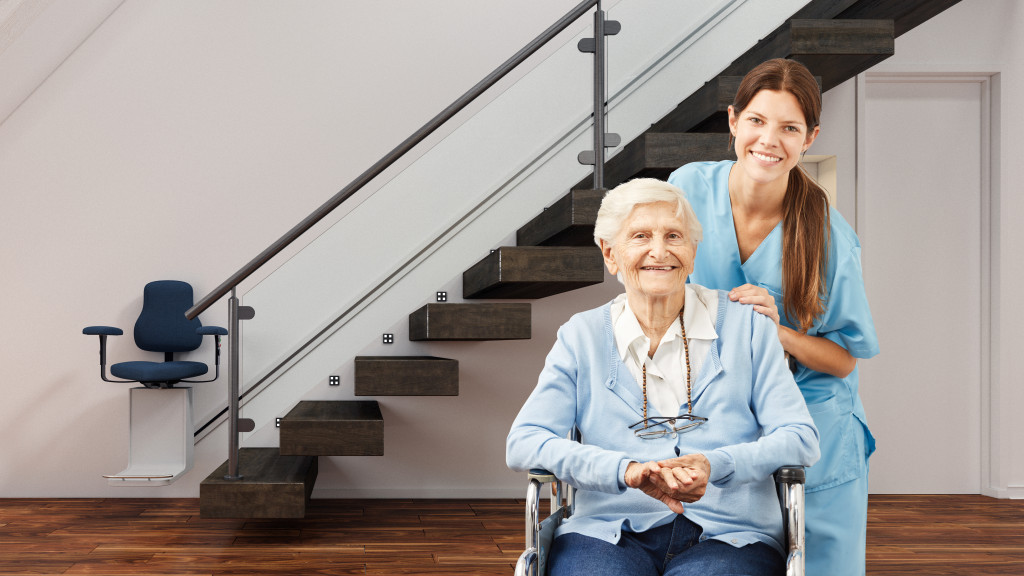- Universal design principles should be followed to ensure a retirement home is accessible and inclusive for seniors.
- Exterior accessibility features should also be included, like level pathways, ramps, and elevators with well-lit areas free of obstacles.
- Enhancing lighting and visibility around the property is vital for seniors’ safety and ergonomic furniture.
- Safety measures should also be taken into account, such as smoke and carbon monoxide detectors, plus home security systems.
- These features combined create an environment suitable for seniors that reduce the risk of injuries and provides peace of mind.
Designing a retirement home that is sufficiently accessible and inclusive can be quite a challenge. Seniors’ unique and ever-changing requirements mean your facilities must be precisely planned. It is essential to ensure that the design is welcoming, functional and meets the needs of the residents.
As people age, their physical and mobility capabilities change, which calls for a suitable setting to cater to their needs. As such, designing for seniors is crucial in providing them with a comfortable and secure environment. A well-designed home or care facility can reduce the likelihood of injuries and improve the residents’ quality of life.
To create an affordable and inclusive retirement home, there are numerous things that one has to consider. Incorporating physical features that cater to the seniors’ needs and any disabilities, they may have can help create a safe living area. To achieve an accessible living space, these are some of the factors that should be considered.
Universal Design Principles for Senior Accessibility
A universal design approach ensures that the space suits all age groups and abilities. This design style promotes versatility and flexibility and can accommodate visitors with mobility issues. Using accessible textures and finishes in the living areas, bathrooms, and kitchens helps to protect the residents’ safety.
Incorporating Single-Floor Living Options
Since stairs can be challenging for seniors, single-floor living spaces are an excellent option. This design feature reduces the risk of falls and helps seniors to move around the home more safely. It’s also advisable to have large, well-lit hallways for smooth movement.
Automatic Doors
Automatic doors can provide a much easier way for seniors to navigate their homes. These doors can be incorporated into all the main access doors since they do not require any physical effort, and seniors can quickly move around the house without pushing or pulling doors open.
This offers seniors a seamless and safe experience as they move around the home. This feature also makes it easier to move large appliances or furniture around without any obstacles.
Installing Grab Bars and Handrails in Key Areas
Installing grab bars and handrails in the bathroom, bedroom, and living areas can make a huge difference in reducing the risks of injury.
These bars and rails should be installed at different heights to cater to mobility and height requirements. In addition, installing these features ensures seniors can safely move around the home.
Adapting Bathrooms and Kitchens for Senior Use
Bathrooms and kitchens are essential in every home, and their design and layout should cater to seniors’ requirements. Accessible countertops, sinks, and drawers help reduce the risks of strained movements, dislocations and falls.
Moreover, lower showers with seats are perfect for seniors who may find standing for a long time challenging.
Exterior Accessibility Improvements
Apart from internal accessibility, exterior accessibility should also be considered. Installing level pathways, ramps, and elevators ensures seniors can move around the property quickly and safely. Entrance areas should be well-lit and free of obstacles, which can cause slips and falls.
Enhancing Lighting and Visibility around the Property
Poor lighting can make it difficult for seniors to navigate, increasing the risk of injuries. It is essential to ensure that all the pathways and entrances are well-lit, and strategic lighting can help seniors to move around the property quickly.
Additionally, the landscaping should be well-maintained to ensure no overgrown areas can lead to accidents.

Incorporating Age-Friendly Furnishings and Features
Seniors may have difficulty using certain pieces of furniture, such as:
Choosing Ergonomic and Comfortable Furniture
Seniors often spend more time sitting down, which can put pressure on their joints and muscles. Choosing furniture with ergonomic support can help reduce discomfort and prevent pain. Besides, comfortable furniture can make seniors feel more relaxed and at ease in their homes.
Opting for Non-Slip Flooring Options
Falls are one of the leading causes of injuries among seniors. Choosing non-slip flooring options like carpet, vinyl, or hardwood with a rough texture is vital to reduce the risk of falls. You can also install anti-slip mats in areas with spills or wetness, like in the bathroom or kitchen.
Adjusting Lighting and Acoustics for Seniors
Seniors may have decreased vision and hearing, making it difficult to see or hear properly. It’s essential to adjust lighting and acoustics in the home to improve visibility and sound quality. This can include installing brighter lights, using contrasting colors on walls and floors, and reducing background noise.
Safety and Security Measures
Creating a safe and secure environment is a top priority in designing for seniors.
Implementing Smoke and Carbon Monoxide Detectors
Smoke and carbon monoxide detectors are essential for any home, but they are significant for seniors who may spend more time in their homes. Implementing these safety measures can prevent accidents and ensure that seniors are alerted in an emergency.
Enhancing Home Security Systems for Peace of Mind
Seniors may be at risk of burglary or intrusion, so enhancing home security systems like installing door and window sensors, motion detectors, and security cameras is essential. These measures can offer peace of mind to seniors and their loved ones, ensuring they are safe and secure in their homes.

Designing an accessible and inclusive retirement home requires careful thought and planning. Incorporating these design tips will create a safe living space, provide comfort, and promote independence.
Seniors with a safe and secure setting can live with dignity, freedom, and happiness. Considering these design tips guarantees an accessible and inclusive home for your retirement community.
